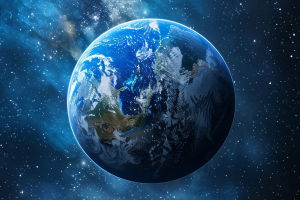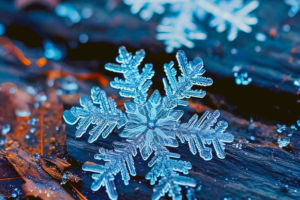Why Moon Glows
Hey Lykkers! Ever gazed up at the night sky, caught by the gentle glow of the moon, and wondered—why exactly does the moon shine? It’s not a star, after all, so where does that soft, silvery light come from?
Let’s dive into the fascinating science behind moonlight and uncover why our natural satellite lights up our nights in such a magical way.
The Moon Doesn’t Make Its Own Light
First things first: the moon doesn’t actually produce any light on its own. Unlike the sun or stars, which generate light through nuclear reactions, the moon is a rocky, airless body that’s completely dark on its own. So, how does it glow so brightly?
The answer is reflection. Moonlight is simply sunlight bouncing off the moon’s surface and making its way to our eyes here on Earth.
How Sunlight Becomes Moonlight
Sunlight is incredibly bright and powerful. When it hits the moon, about 12% of that light gets reflected back into space—and some of it travels toward Earth. This reflected light is what we see as moonlight.
The moon’s surface is covered in a dusty layer called regolith, made up of tiny rock fragments and dust created by eons of meteorite impacts. This regolith is surprisingly good at reflecting light, although it’s not as shiny as, say, a mirror.
Why Moonlight Looks Different From Sunlight
If moonlight is just reflected sunlight, why does it look so much softer and cooler than the bright yellow sun?
There are a few reasons:
Intensity: Only a small fraction of sunlight reflects off the moon, so moonlight is much dimmer than direct sunlight.
Color: The moon’s surface reflects light unevenly, absorbing more of the red and yellow wavelengths, which leaves a cooler, bluish tint in the light we see.
Atmosphere: When moonlight passes through Earth’s atmosphere, it scatters differently than sunlight, which affects the color and brightness.
The Moon’s Phases Affect Moonlight
Have you noticed the moon changes shape over the month? These phases happen because of how the moon orbits Earth, changing the angle of sunlight hitting it. During a full moon, the entire face of the moon visible from Earth is lit up, making moonlight brightest. In contrast, during a new moon, the side facing us is in shadow, so the moon is nearly invisible.
This cycle impacts not only the brightness of moonlight but also how much it influences the night environment, from animal behavior to human activities.
Moonlight’s Impact on Earth
Moonlight isn’t just beautiful—it affects life here on Earth in many ways:
Tides: The moon’s gravitational pull, more than its light, causes ocean tides, but the phases of moonlight signal tidal changes to many marine creatures.
Animal Behavior: Some animals use moonlight for navigation or hunting. For example, sea turtles hatch at night and rely on moonlight reflecting off the ocean to find their way.
Human Culture: For millennia, moonlight has inspired art, music, and folklore, shaping how humans connect with the night.
Fun Fact: Earthshine — The Moon Glowing in the Dark
Sometimes, when the moon is just a thin crescent, you might notice the dark part of the moon faintly glowing too. This is called earthshine—sunlight reflected off Earth’s surface and back onto the moon, lighting it up softly. It’s like the moon is glowing from a second, indirect source!
Wrapping Up
So, the next time you find yourself mesmerized by the moon’s glow, remember—it’s all about sunlight playing a cosmic game of billiards with the moon’s dusty surface before reaching your eyes. That gentle, shimmering moonlight is a beautiful reminder of our connection to space and the incredible natural dance between Earth, the moon, and the sun.
If you want to learn more about the moon’s mysteries, lunar exploration, or how stargazing works, just let me know—I’m here to help!
-
 Spin and OrbitIf Earth Stops Spinning or Orbiting, Here's What Would Happen — The Results Are Beyond Imagination!
Spin and OrbitIf Earth Stops Spinning or Orbiting, Here's What Would Happen — The Results Are Beyond Imagination! -
 Beyond the MilkyThink the Milky Way Is Big? This Cosmic Giant Is 90 Times Larger—And It’s Just the Beginning!
Beyond the MilkyThink the Milky Way Is Big? This Cosmic Giant Is 90 Times Larger—And It’s Just the Beginning! -
 Snowflake Science RevealedThe Incredible Science Explaining How Snowflakes Become Nature’s Perfect Masterpieces!
Snowflake Science RevealedThe Incredible Science Explaining How Snowflakes Become Nature’s Perfect Masterpieces!
Contact to : xyjph123@gmail.com
Privacy Agreement
Copyright © boyuanhulian 2020 - 2022. All Right Reserved.
Privacy Agreement
Copyright © boyuanhulian 2020 - 2022. All Right Reserved.